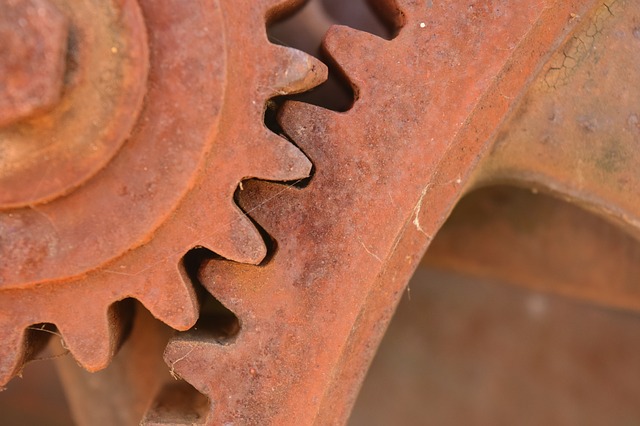Cast iron
The term 'cast iron' refers to a range of iron-carbon alloys, with a carbon content that is typically between 2 and 4%. During the Industrial Revolution, before the widespread development of the steel industry, cast iron was commonly used in a wide range of architectural applications because of to its relative affordability.
Cast iron is manufactured by re-melting pig iron along with quantities of limestone, silicon and carbon (and sometimes scrap steel). Traditionally, cast iron is melted in a blast furnace known as a cupola, but it can also melted in electric induction furnaces or arc furnaces. The molten cast iron is then poured into a holding furnace or ladle ready for casting (that is, being poured into a mould, and allowed to cool).
The advantages of using cast iron derive from its relatively low melting temperature, which increases its usability, and its good compression strength. However, it is weak in tension and bending, and will fracture before it bends or distorts. It also loses strength and stiffness when subjected to high heat.
In comparison with wrought iron or steel, cast iron is non-malleable, hard and brittle.
[edit] Related articles on Designing Buildings
- Aluminium.
- Conservation of Architectural Ironwork.
- Copper.
- Difference between cast iron and wrought iron.
- Failure of cast iron beams.
- Ferrous.
- Galvanised steel.
- Investment casting.
- Iron.
- Ironwork.
- Metal.
- Metal fabrication.
- Stainless steel.
- Stove.
- Structural steelwork.
- The Iron Bridge.
- Types of metal.
- Weathering steel.
- Wrought iron.
- Zinc
Featured articles and news
Delivering for tenants; National Retrofit Hub
New report offers recommendations to strengthen energy efficiency standards to protect private renters.
Government consultations for the summer of 2025
A year of Labour, past and present consultations on the environment, the built environment, training and tax.
CMA competitiveness probe of major housing developers
100 million affordable housing contributions committed with further consultation published.
Homes England supports Greencore Homes
42 new build affordable sustainable homes in Oxfordshire.
Zero carbon social housing: unlocking brownfield potential
Seven ZEDpod strategies for brownfield housing success.
CIOB report; a blueprint for SDGs and the built environment
Pairing the Sustainable Development Goals with projects.
Types, tests, standards and fires relating to external cladding
Brief descriptions with an extensive list of fires for review.
Latest Build UK Building Safety Regime explainer published
Key elements in one short, now updated document.
UKGBC launch the UK Climate Resilience Roadmap
First guidance of its kind on direct climate impacts for the built environment and how it can adapt.
CLC Health, Safety and Wellbeing Strategy 2025
Launched by the Minister for Industry to look at fatalities on site, improving mental health and other issues.
One of the most impressive Victorian architects. Book review.
Common Assessment Standard now with building safety
New CAS update now includes mandatory building safety questions.
RTPI leader to become new CIOB Chief Executive Officer
Dr Victoria Hills MRTPI, FICE to take over after Caroline Gumble’s departure.
Social and affordable housing, a long term plan for delivery
The “Delivering a Decade of Renewal for Social and Affordable Housing” strategy sets out future path.
A change to adoptive architecture
Effects of global weather warming on architectural detailing, material choice and human interaction.
The proposed publicly owned and backed subsidiary of Homes England, to facilitate new homes.
How big is the problem and what can we do to mitigate the effects?
Overheating guidance and tools for building designers
A number of cool guides to help with the heat.
The UK's Modern Industrial Strategy: A 10 year plan
Previous consultation criticism, current key elements and general support with some persisting reservations.
Building Safety Regulator reforms
New roles, new staff and a new fast track service pave the way for a single construction regulator.


























